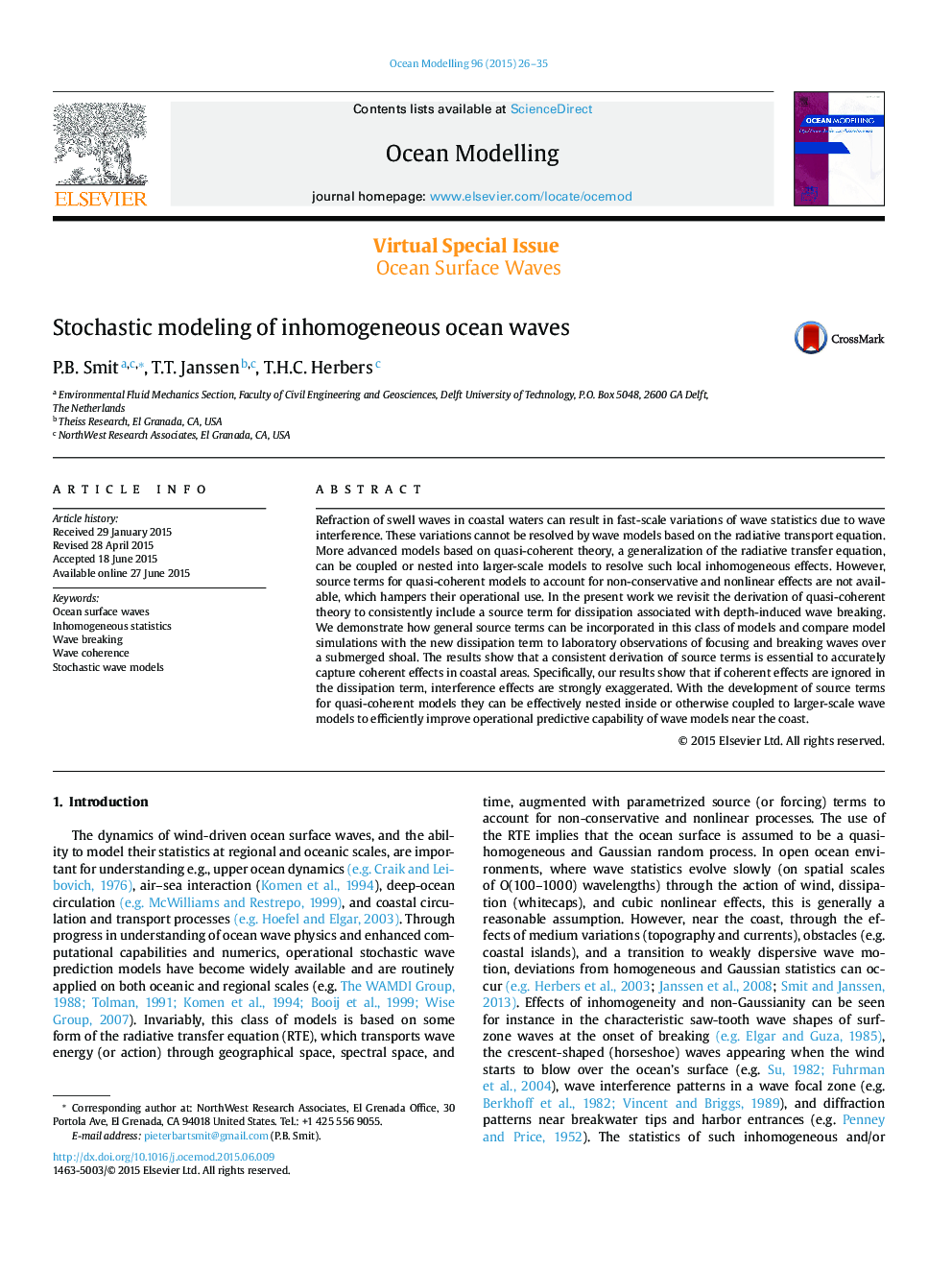| Article ID | Journal | Published Year | Pages | File Type |
|---|---|---|---|---|
| 4551994 | Ocean Modelling | 2015 | 10 Pages |
•Revisits quasi-coherent theory to include dissipation source term.•Inclusion of coherent dissipation in a stochastic wave model.•Discusses implementation in and coupling to operational wave models.•Compare model with laboratory observations of breaking waves in focal zone.
Refraction of swell waves in coastal waters can result in fast-scale variations of wave statistics due to wave interference. These variations cannot be resolved by wave models based on the radiative transport equation. More advanced models based on quasi-coherent theory, a generalization of the radiative transfer equation, can be coupled or nested into larger-scale models to resolve such local inhomogeneous effects. However, source terms for quasi-coherent models to account for non-conservative and nonlinear effects are not available, which hampers their operational use. In the present work we revisit the derivation of quasi-coherent theory to consistently include a source term for dissipation associated with depth-induced wave breaking. We demonstrate how general source terms can be incorporated in this class of models and compare model simulations with the new dissipation term to laboratory observations of focusing and breaking waves over a submerged shoal. The results show that a consistent derivation of source terms is essential to accurately capture coherent effects in coastal areas. Specifically, our results show that if coherent effects are ignored in the dissipation term, interference effects are strongly exaggerated. With the development of source terms for quasi-coherent models they can be effectively nested inside or otherwise coupled to larger-scale wave models to efficiently improve operational predictive capability of wave models near the coast.
